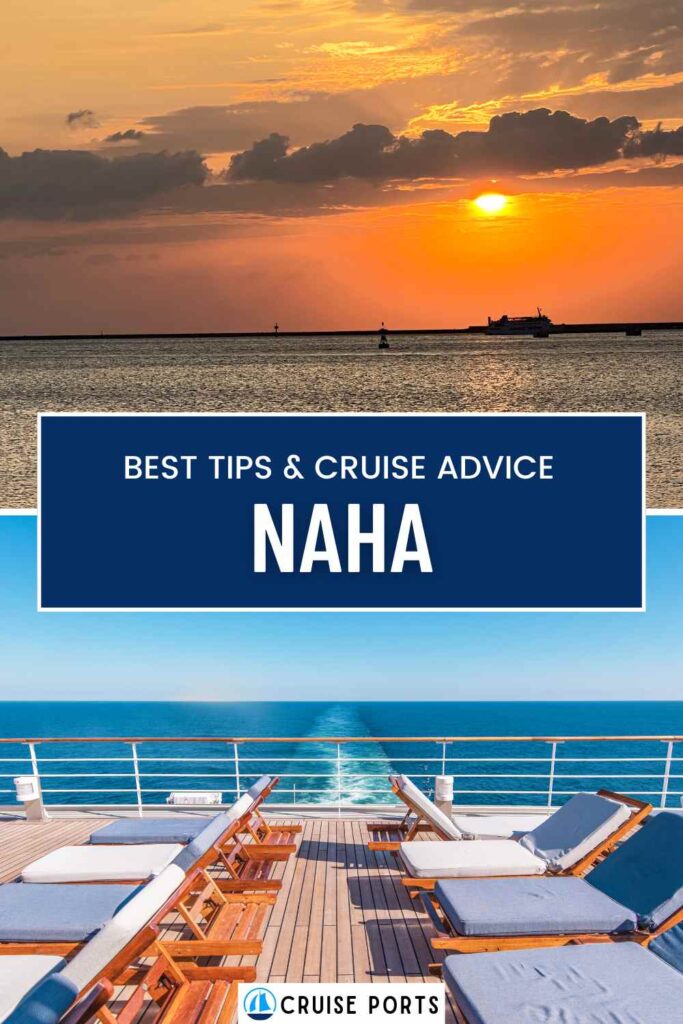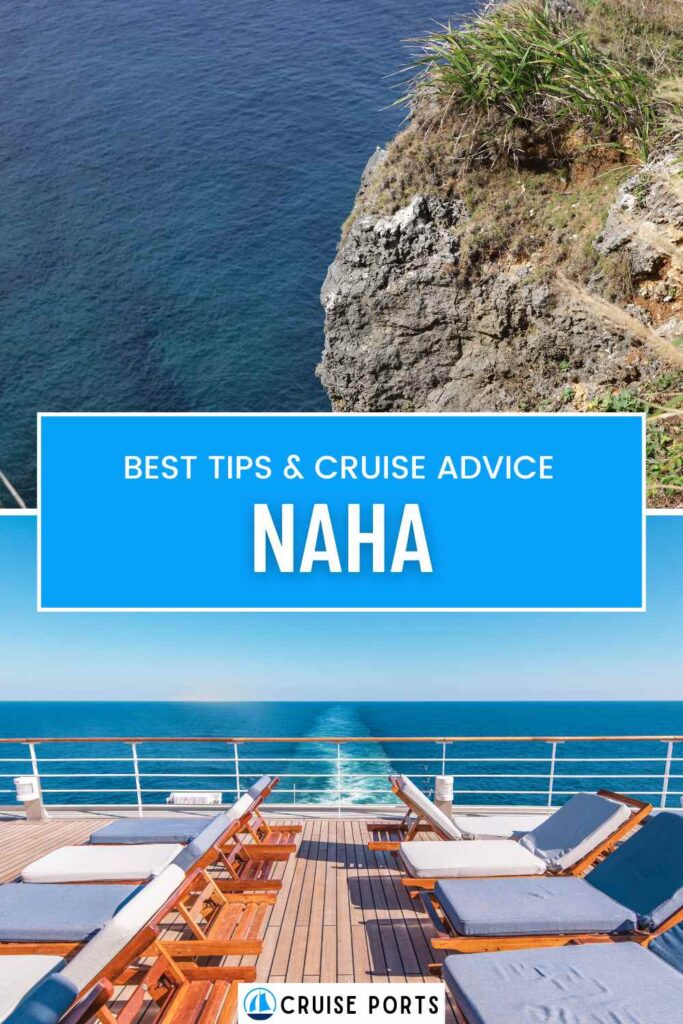Naha Cruise Port is the gateway to the cultural wonders of Okinawa.
From stunning beaches to historic castles, this port offers travelers a blend of tradition and modernity.
In this comprehensive guide, we’ll explore essential tips and hidden gems, ensuring you make the most of your visit and treasured secrets.
Understanding Naha Cruise Port
Naha Cruise Port, situated on the southwestern coast of Okinawa’s main island in Japan, serves as a vital hub for cruise liners venturing through the East China Sea and Pacific routes.
It welcomes thousands of visitors each year, offering a convenient entry point to explore Okinawa’s rich history, stunning coastal scenery, and vibrant local culture.
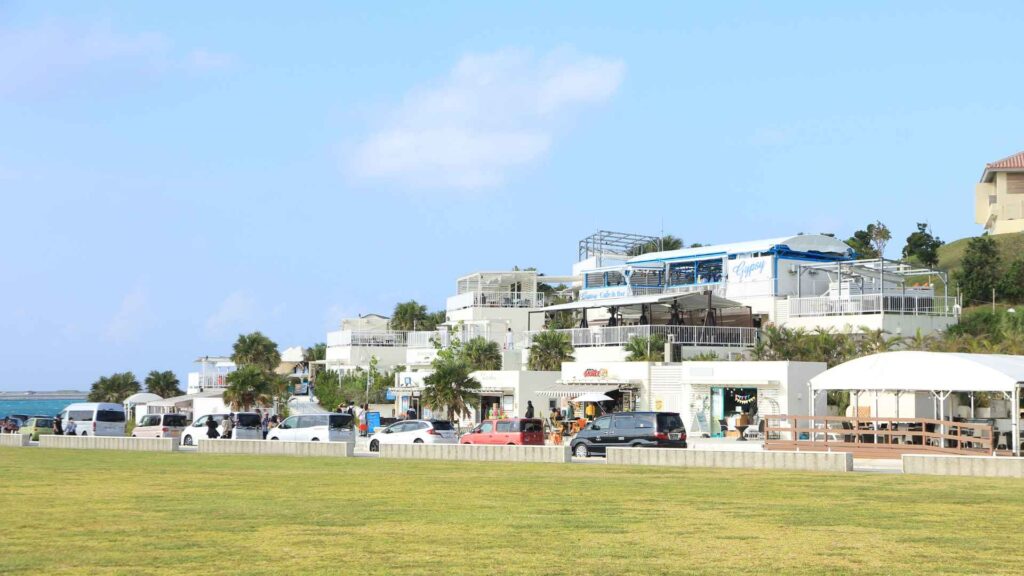
Facilities and Amenities
- Passenger Terminal: Expect a clean, well-organized terminal with modern seating areas and multilingual signage to guide you through.
- Shops and Services: Find duty-free stores, souvenirs, and handy conveniences like ATMs and currency exchange kiosks.
- Wi-Fi Access: Enjoy complimentary Wi-Fi spots in the arrival lounges, perfect for updating friends and family or making last-minute travel plans.
- Tourist Information Center: Get local maps, brochures, and suggestions from bilingual staff who can help you organize day trips around Naha and beyond.
Port Layout and Surroundings
The port’s layout is straightforward, with well-marked walkways directing you from the ship to immigration counters and customs.
Once you clear security, you’ll step into a bustling port environment packed with local vendors offering snacks, crafts, and optional excursions.
Outside, you’ll find a variety of transportation options—including taxis, shuttle buses, and public buses—ready to take you into downtown Naha or to other areas around Okinawa Island.
Why Naha Cruise Port Stands Out
- Central location, making it easy to discover the best of Okinawa
- Seamless disembarkation experience with efficient customs and immigration
- Gateway to a unique blend of traditional Ryukyuan culture and modern city life
- Great launching point for day trips to UNESCO World Heritage Sites, pristine beaches, and hidden villages
Pro Tip: If you’re looking to maximize your time ashore, have a loose itinerary before you arrive. This will help you avoid crowds at the busiest attractions. Grab any necessary tickets or passes in advance so you can hit the ground running.
How to Get to Naha Cruise Port
Even though it’s most commonly accessed by sea, travelers might arrive in Okinawa by plane and then make their way to the cruise terminal.
Understanding how to get to Naha Cruise Port seamlessly will ensure a stress-free start to your journey.
Arriving via Naha Airport
- Taxi Services: Taxis from the airport to the port typically take about 15–20 minutes, depending on traffic. They are metered, straightforward to use, and drivers are generally honest. Keep small bills in yen handy.
- Monorail: The Okinawa Urban Monorail (Yui Rail) connects Naha Airport to central city stations. Though it doesn’t stop directly at the cruise terminal, you can disembark at Asahibashi Station or Tsubogawa Station, then take a short taxi ride or walk about 20–25 minutes to the port.
- Public Buses: Several bus lines pass near the port area. These can be cost-effective, though schedules may be less frequent on weekends or holidays.
Arriving via Downtown Naha
If you’re already staying in the city:
- Short Taxi Ride: Naha is a relatively compact city. It should take under 10 minutes from popular downtown spots to reach the cruise port.
- Walking: From Kokusai Street, you can walk to the port in about 30 minutes. This stroll can be scenic if you love exploring local neighborhoods, but be prepared for Okinawa’s sometimes hot and humid weather.
Driving and Parking
Visitors with rental cars will find public parking lots near the cruise terminal, but availability may vary. Expect to pay an hourly or daily parking fee.
Rental cars are an excellent way to explore Okinawa’s outer areas, such as secluded beaches or rural villages, before boarding your ship.
Tips for a Smooth Arrival
- Check Your Ship’s Departure Time: Always allow extra time for travel, factoring in potential traffic or last-minute errands.
- Cash is King: Keep yen on hand for public transportation tickets, vending machines, and smaller taxi fares.
- Language: English signage is fairly common, but if you have a particular inquiry, consider having your destination written in Japanese to show taxi drivers or bus staff.
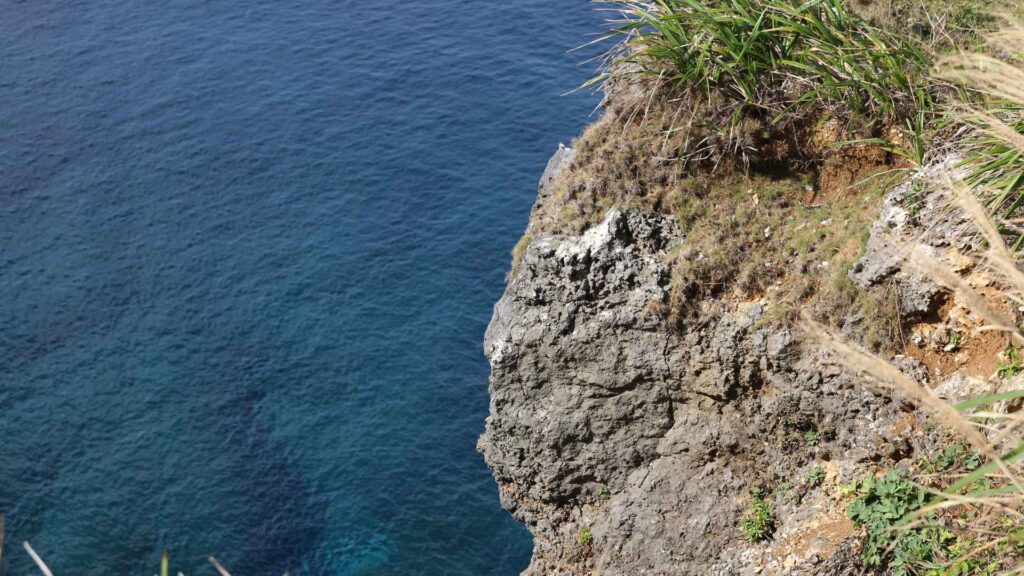
Arrival and Check-In Process
Once you’ve reached Naha Cruise Port, an organized arrival and check-in process awaits.
Cruise lines and port authorities have worked diligently to design a smooth experience for both seasoned cruisers and first-timers.
Disembarkation and Security
- Luggage Drop-Off: If you’re a departing passenger, you can hand your larger bags to designated staff. For arriving visitors, pick up your baggage from the carousel or designated area and then proceed to customs.
- Security Screening: Expect an airport-style screening. Prohibited items—such as sharp objects or excess liquids—will be flagged.
- Passport and Immigration: All travelers must show valid travel documents. Make sure your passport has the necessary entry stamps and that you’ve completed any required landing cards.
Check-In Counters
- Documents: Keep your passport, booking confirmation, and any health declaration forms handy. Cruise staff may also request to see your travel insurance details.
- Onboard Card Activation: Once your check-in is complete, you’ll receive your cruise card, which doubles as your stateroom key and onboard payment method.
- Ship Schedules: You’ll be given or directed to the day’s schedule. Check out departure times, onboard events, and port excursions.
Amenities Before Boarding
- Waiting Lounge: Relax in comfortable seating areas if you arrive early. Some lounges offer charging stations for phones and devices.
- Refreshments: Grab a quick bite at nearby cafes or vending machines offering cold drinks—a must in Okinawa’s tropical climate.
- Souvenir Shopping: If you forgot to pick up last-minute local gifts or want extra snacks for your trip, you’ll find mini shops located near the check-in area.
Boarding Tips
- Arrive Early: This gives you time to handle unexpected issues, like missing paperwork or last-minute changes.
- Dress Comfortably: Okinawa can be hot and humid, so opt for lightweight and breathable clothing as you navigate the queues.
- Be Polite: Japanese culture values courtesy. A simple “Arigato” (thank you) goes a long way to show respect and spread good vibes.
By following these guidelines, you’ll breeze through the arrival and check-in processes, leaving you more time to explore the ship or begin your onshore adventures.
Top Attractions Near the Port
Once you step off the cruise ship, Naha’s cultural delights await just beyond the terminal. From historic landmarks to lively shopping streets, there’s no shortage of memorable attractions within easy reach.
- Often dubbed the “Miracle Mile”, Kokusai Street teems with shops, restaurants, and entertainment venues.
- Souvenirs Galore: Browse stalls selling colorful Ryukyu glass, Shisa dog figurines, and Okinawan snacks.
- Nightlife: Stay into the evening to enjoy lively bars and pubs featuring local music performances known as “eisa” and traditional dances.
Shuri Castle
- A UNESCO World Heritage Site that once served as the royal court of the Ryukyu Kingdom.
- Reconstruction Efforts: Portions of the castle were damaged by fire in 2019, but ongoing restoration projects and partially reopened areas offer glimpses of its grandeur.
- Cultural Exhibits: Delve into the region’s fascinating heritage through exhibits showcasing royal artifacts and traditional architecture.
Tsuboya Pottery District
- Home to Okinawa’s centuries-old ceramics tradition, Tsuboya District is a short stroll from Kokusai Street.
- Explore small workshops and stores specializing in yachimun (Okinawan pottery).
- Hands-On Classes: Some studios offer drop-in lessons where you can create your own pottery piece as a unique souvenir.
Naminoue Beach and Shrine
- If you’re craving a quick beach visit, Naminoue Beach is conveniently located near the port, perfect for a short seaside break.
- Adjacent is Naminoue Shrine, perched atop a coastal cliff, providing panoramic views of the East China Sea.
- Cultural Significance: This Shinto shrine is believed to protect fishermen and travelers, so it’s a great spot for a quick blessing before resuming your adventure.
Makishi Public Market
- Often called “Naha’s Kitchen”, this bustling market is lined with fresh seafood, tropical fruits, and colorful vegetables.
- Local Flavors: Sample goya (bitter melon), freshly caught fish, and a medley of pickled goods.
- Second Floor Dining: Some vendors on the ground floor will cook your selected produce for a small fee. Head upstairs to enjoy a freshly prepared meal.
Whether you have a day in port or a few hours, these attractions offer a taste of what Naha is all about—a dynamic mix of heritage, culinary delight, and genuine Okinawan warmth.
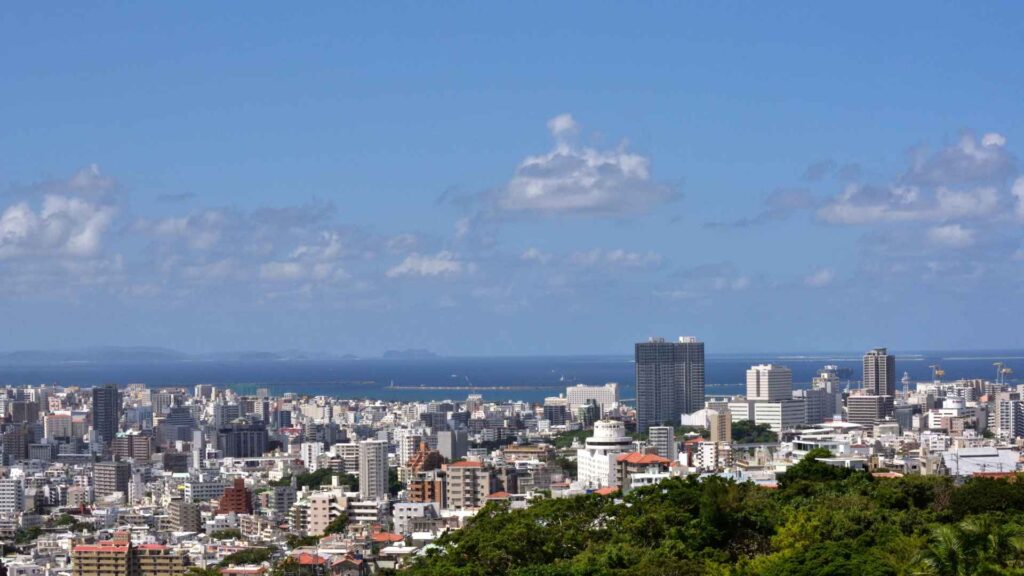
Immersing in Local Culture
Okinawa’s distinct identity stems from its Ryukyuan heritage, mixing Japanese influences with its own vibrant traditions.
To truly experience Naha, step beyond the tourist hotspots and immerse yourself in local cultural practices and customs.
Language and Communication
- The local dialect is Uchinaguchi, though standard Japanese and some English are spoken in tourist areas.
- Useful Phrases: Try “Mensore” (welcome) or “Haisai” (hello) for a friendly greeting.
- Locals appreciate any attempts at Japanese, even simple words like “Arigato” (thank you) or “Sumimasen” (excuse me).
Traditional Arts and Crafts
- Ryukyu Glass: Often featuring vivid blues and greens reminiscent of the ocean, these handcrafted pieces make stunning souvenirs.
- Bingata Textiles: Admire or purchase intricately dyed fabrics featuring unique floral and geometric patterns, a specialty of Okinawa for centuries.
- Eisa Dance: A popular folk dance typically performed during the Obon season. Expect synchronized drumming, colorful costumes, and lively chanting.
Festivals and Events
- Naha Tug-of-War: This annual event typically held in October involves a giant rope and thousands of participants pulling for victory.
- Shuri Castle Festival: Experience parades, traditional music, and ceremonial events celebrating Okinawa’s royal past.
- Eisa Festivals: Various local festivals feature eisa performances, often culminating in mesmerizing group routines that celebrate ancestors and community bonds.
Respecting Customs
- Shoes Off: In traditional inns (ryokan), certain restaurants, or private homes, remove your shoes before entering.
- Bowing: While not strictly mandatory for tourists, a slight bow is a polite show of gratitude or greeting.
- Gift-Giving: If you’re invited into someone’s home, offering a small gift (often snacks or sweets) is seen as a thoughtful gesture.
Connecting with Locals
- Community Classes: Join a language or cooking class to gain deeper insight into everyday life.
- Explore Neighborhood Markets: Chat with stall owners about their produce, recipes, and family histories.
- Try Local Cuisine: Dining in smaller, family-run eateries is an easy way to strike up conversation and learn about Okinawa’s unique dishes.
Immersing in local culture is more than checking off famous landmarks. It’s about meaningful interactions and experiencing the heartbeat of the island—its people, their traditions, and the welcoming spirit that shapes Okinawa’s identity.
Savoring Okinawan Cuisine
One of the highlights of any trip to Naha is indulging in Okinawan cuisine, known for its unique blend of Japanese, Chinese, and Southeast Asian influences. Whether you’re a food adventurer or prefer classic comfort foods, you’ll find plenty of culinary delights near Naha Cruise Port.
Must-Try Dishes
- Goya Champuru: A stir-fry with bitter melon, tofu, eggs, and pork or Spam. The distinct bitterness is surprisingly refreshing and often associated with Okinawan longevity.
- Okinawa Soba: A popular noodle dish made with thick, chewy wheat noodles in a pork- or bonito-based broth. Toppings may include braised pork belly, fish cake, and fresh scallions.
- Taco Rice: Inspired by American influence, taco rice stacks seasoned ground beef, lettuce, cheese, and salsa over rice. It’s a local twist on a Tex-Mex favorite.
Local Ingredients
- Seafood: Surrounded by ocean, Okinawa boasts super-fresh seafood like tuna, squid, and reef fish.
- Pork: Pork is a cornerstone of Okinawan cooking. Popular varieties of pork-based dishes rely on every part of the pig, reflecting the island’s resourceful food tradition.
- Island Vegetables: Seasonal produce like purple sweet potatoes, bitter melon, and green papaya add unique textures and flavors to Okinawan fare.
Dining Spots Around Naha
- Kokusaidori Restaurants: Many tourist-friendly eateries line Kokusai Street. Look for restaurants displaying pictures or plastic food models if you’re unsure what to order.
- Side-Street Izakayas: These cozy taverns serve small plates ideal for sampling a variety of dishes. Try pairing them with local brews or the famous awamori (Okinawan liquor).
- Makishi Public Market: Enjoy an interactive dining experience where you pick fresh ingredients from market vendors, and they are cooked for you on the spot.
Dietary Considerations
- Vegetarian Options: Okinawan cuisine features tofu-based dishes, seaweed soups, and vegetable champuru. While purely vegetarian restaurants might be limited, many spots will accommodate requests to omit meat or fish stock.
- Allergies: Alert the staff to common allergies, but keep in mind some smaller restaurants may have limited awareness of specific dietary needs in English.
- Halal and Kosher: Specific accommodations are scarce, but you can still find seafood- or vegetable-focused meals that meet certain dietary restrictions.
With so many delectable dishes and vibrant flavors at every turn, exploring Okinawan cuisine is a journey in itself. Sample widely, ask locals for recommendations, and you’ll leave with a full belly and a deeper appreciation for Naha’s culinary heritage.
Navigating Transportation Options
Okinawa’s main island offers a variety of transportation methods to help you explore beyond the port. From convenient urban links to scenic coastal drives, choosing the right travel mode can enhance your overall experience.
Monorail (Yui Rail)
- Route: It runs from Naha Airport to Shuri, stopping at major downtown stations like Asahibashi (near the port), Kokusai Street, and Omoromachi (close to DFS Galleria).
- Advantages: Affordable, punctual, and a great way to avoid traffic congestion.
- Limitations: The monorail line is limited to central Naha, so for farther destinations you’ll need alternate transportation.
Public Buses
- Extensive Network: Buses reach most parts of the island, including tourist sites such as the Okinawa Prefectural Museum and Aquarium in the north.
- Cost: Fares vary by distance, and you pay as you exit. Keep small yen coins and bills ready.
- Challenges: Bus schedules may be infrequent, especially in rural areas, and signage is sometimes in Japanese only. Research your route ahead of time or have it written down in Japanese characters.
Taxis
- Convenience: Readily available near the cruise port and popular landmarks. Drivers are usually polite and use metered fares.
- Fares: Short rides in downtown are relatively cheap. Longer journeys can be expensive, so consider splitting with other travelers.
- Language Tips: Show the driver your destination in Japanese if possible to avoid confusion.
Rental Cars
- Freedom: Perfect for exploring remote beaches and scenic viewpoints at your own pace.
- Requirements: You’ll need an international driving permit (IDP) or valid Japanese license. Drive on the left side of the road.
- Parking: In central Naha, parking spaces can be limited, and fees can add up. Plan your itinerary to include designated parking areas.
Tour Packages and Shore Excursions
- Group Tours: Cruises often organize half-day or full-day excursions covering key attractions. These eliminate the stress of planning but can feel rushed.
- Private Guides: If you prefer a more personal experience, hire a local guide who speaks English and can tailor an itinerary to your interests.
- Island-Hopping: For those with more time, ferries and small flights connect to outlying islands like Ishigaki or Miyako—adding more unique beaches and cultural sites to your trip.
Biking and Walking
- Short Distances: Navigating central Naha on foot or by bike can be enjoyable if you’re used to subtropical climates.
- Rental Options: Some hotels and hostels offer bike rentals. Just remember to be mindful of traffic rules and pedestrian rights-of-way.
No matter how you travel, staying flexible and open to new experiences is the key. From the monorail’s convenience to the freedom of a rental car, each choice offers a different perspective of Okinawa’s stunning landscapes and warm hospitality.
Money-Saving Tips and Hacks
Traveling can get pricey quickly if you aren’t mindful of where and how you spend. Thankfully, visiting Naha Cruise Port on a budget is entirely possible with the right strategies and know-how.
Plan Ahead
- Early Bookings: Reserve accommodations, tours, and transportation in advance to snag early-bird discounts.
- Travel Passes: If you plan on using public transit extensively, check for day passes or discount cards that offer unlimited rides on the monorail or buses.
Eating on a Budget
- Conbini (Convenience Stores): Stores like FamilyMart, Lawson, or 7-Eleven sell affordable bentos, onigiri (rice balls), and snacks. They’re a great option for budget-friendly breakfast or lunch.
- Local Markets: Head to Makishi Public Market or small neighborhood vendors for fresh produce, prepared meals, and local specialties.
- Izakayas and Lunch Specials: Many restaurants offer teishoku (set meals) at lunchtime that bundle a main dish, side, soup, and drink for a reasonable price.
Attraction Passes
- Shuri Castle Combination Tickets: Although parts of Shuri Castle are under restoration, combination tickets may include entry to related cultural sites at a discounted rate.
- Group Discounts: Traveling with friends or family? Look out for group rate packages at popular attractions.
- Free Landmarks: Parks, shrines, and beaches, like Naminoue Beach, are free to enter and offer a taste of local culture without the extra cost.
Smart Shopping
- 100 Yen Shops: Daiso and Can Do are brimming with affordable souvenirs, household goods, and snacks. You might find small gifts or unique local items at unbeatable prices.
- Tax-Free Stores: Overseas visitors can receive tax exemptions at participating shops when spending above certain thresholds. Bring your passport to take advantage.
- Haggle Politely: While not as common in Japan, some local markets or independent artisans may offer small discounts if you buy multiple items.
Transportation Savings
- Walk Whenever Possible: Central Naha is relatively compact, and you’ll get to experience hidden gems along the way.
- Shared Taxis: Split the fare with fellow cruisers if you’re headed to the same destination.
- Look Out for Promo Codes: Ride-hailing apps sometimes offer welcome discounts for first-time users.
General Hacks
- BYO Water Bottle: Okinawa’s climate can be hot, so staying hydrated is crucial. Fill up at hotel water stations or use public drinking fountains.
- Off-Peak Visits: Visiting during shoulder seasons (like late spring or early autumn) often means cheaper flights and less crowded attractions.
- Free Wi-Fi: Use free Wi-Fi hotspots at the port terminal, cafés, and some public areas to avoid expensive roaming charges.
Implementing these money-saving tips doesn’t mean cutting corners on your experience. By being a savvy traveler, you can immerse yourself in the sights, flavors, and culture of Naha without breaking the bank.
